Blue Smoke From Exhaust – Causes and Tips to Solve it
Were you driving around doing your usual chores when you suddenly caught a glimpse of your car leaving blue smoke around? Well, don’t panic! We all have been there at some point even though it is a sign that your car is having major trouble on its insides, but still, it’s nothing that cannot be fixed.
Before you go all-in on blue smoke, you first need to understand what exactly is blue smoke, what causes it, and how you can fix or prevent it.
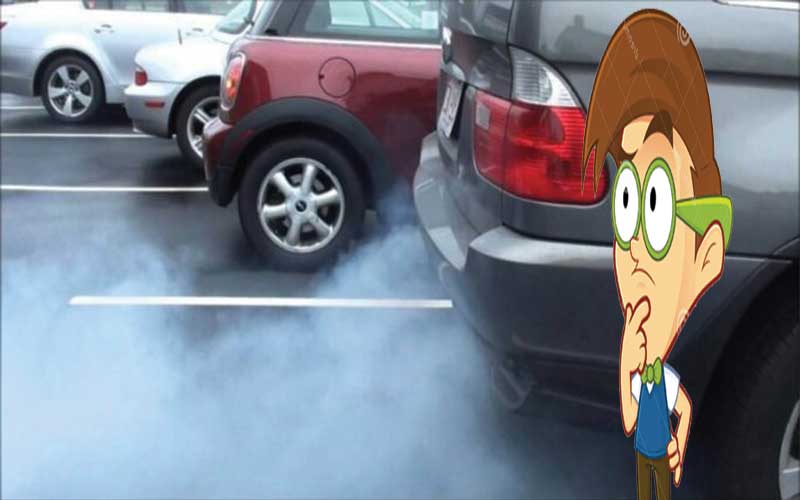
Now that’s the tricky part, isn’t it, but you are lucky! Because I will be telling you all about blue smoke today, so you can get a better understanding of it and can easily fix one when you see it.
If you don’t right away take care of this blue smoke, it definitely will get bigger, and your car’s condition will get worse, causing you a lot of damage and money in the long run.
What does Blue Smoke mean?
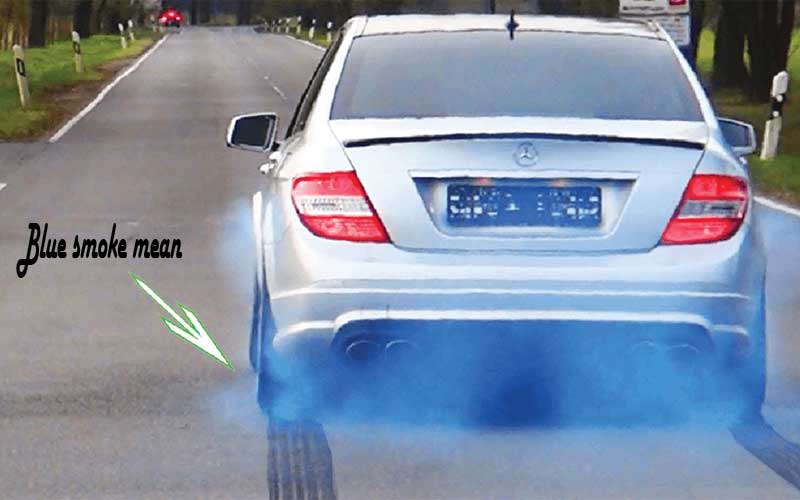
If you were to Google this, you would probably get about a hundred answers, which will leave you to wonder what to believe. But don’t worry, I will help you out here.
To be very straight forward and simple, Blue smoke coming from the exhaust is a crystal clear sign that something is not right under the hood of your car.
A lot of factors can cause it, but mainly, it is a clear sign that your car engine is burning oil. It usually happens because of bad valve seals; every engine in a car has valves that fulfill the duty of opening and closing themselves in time in order to help the engine run the car.
These valves mechanically open when the pressure from the rocker arm is applied to them, as they open the air and gas get into the engine.
Also, after the exhaust gas has been burned, the valves open again to let the gas out of the engine. So, basically, these valves play a pretty major part in your car.
Now blue smoke happens when the piston rings or a faulty valve guide either seals the other working components of the engine or the other components themselves stop working or get worn out and slow down, which then causes leakage of oil.
The oil then flows into the combustion chamber, where it then burns together with the fuel. Which, as a result, creates blue smoke.
So, yea, if you see blue smoke rising from your car, we do have a real problem there. Other than creating this dangerous blue smoke, these conditions also cause your car to heat up and can cause a very nasty smell, which is extremely harmful to you and your surrounding.
What Causes Blue Smoke in your Exhaust?
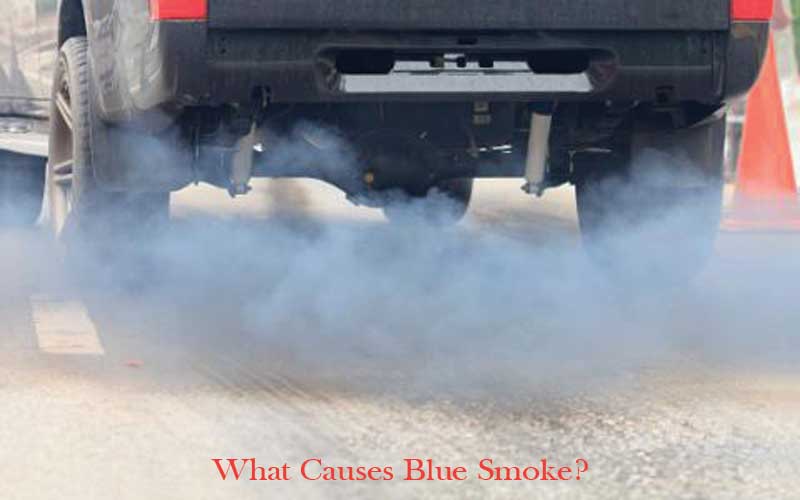
Like I already said before, there could be a bunch of components that could be participating in causing blue smoke under your hood. This is no doubt very confusing and frustrated at first, but once you get a hold of it, I promise it isn’t that much difficult.
So, let’s talk about the six more usual and important features first of your car first, the ones that are more likely to cause the blue smoke.
So that if you ever come across such an incident, you would know which parts of your car you would want to check, fix, or replace first. Let’s dive into it!
1. Bad / Faulty Valves
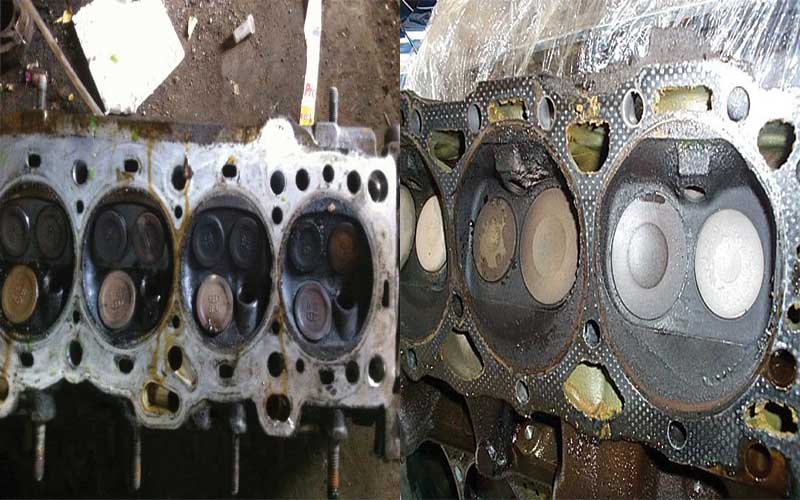
If you are not someone who owns or drives a diesel car and you catch blue smoke rising up from the exhaust port of your car, it could probably be because of your bad or faulty valves.
You see, valves have this specific function in an engine; they open and close at specific times with the help of the Rocker Arm. These valves let the air and gas in the engine after air and oil are burnt. It also enables the exhaust gas out of the engine.
Oil helps cover the top of the valves where the Rocker Arm applies pressure. Only valve seals can stop the oil from flowing into the engine, and the valves cant do that if they are damaged or broken, which causes blue smoke.
How to fix it
Fixing broken or faulty valves are so easy you can even d it at home by yourself or with the help of someone who knows a little about cars. All you have to do is remove the spring of the valve firstly, then take it out and replace it with a new one.
Note: Read our latest guide related to Jeep JK Exhaust System.
2. Damaged / Broken Glow Plug
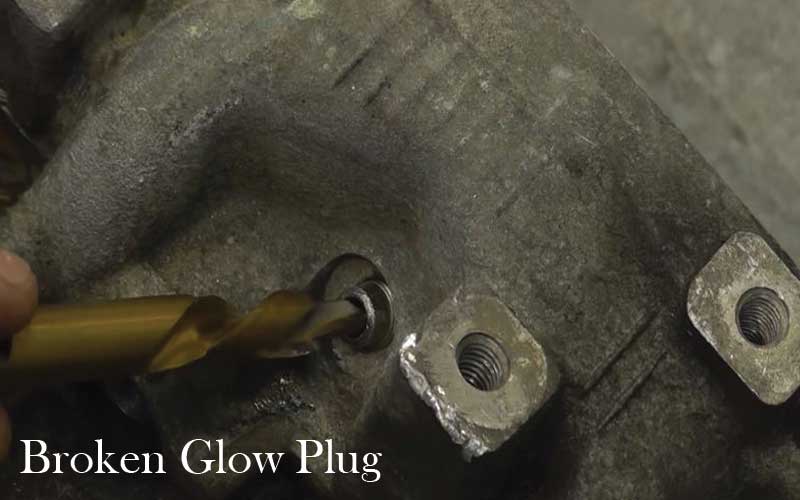
To start up a diesel car, you will almost always need a glow plug. Glow plugs are one of the most important tools in a diesel car since it plays a major role in ignition of the fuel,
But here’s the thing, if the glow plugs get bad, it is definitely going to create a blue smoke.
How to fix it
Once again, all you have to do is take your car to the garage and ask them to replace your glow plug, or if you know how to do it, maybe you should try your own luck with it.
3. Stuck PVC Valve

PVC, also known as positive crankcase ventilation, as you soon as you see blue smoke leaving your car’s hood, you should rush to see if it’s coming from PVC.
Because the PVC gets stuck, it will keep on merging the oil of your car with air and all the other gases that are found in your car, this mixture of gases will cause the blue smoke.
How To Fix It
Even if it is your PVC, there’s nothing to worry about; PVC replacements and fixations are super convenient and cheap.
If you want to do it yourself, all that you have to do is locate a tube that connects to the intake manifold.
Once you find that tube, keep following the tube back until you see the PCV Valve. Remove the faulty old PCV valve and replace it with a new one.
That’s it! If you find this hard, you can get yours fixed at any automobile shop easily.
4. Worn Engine
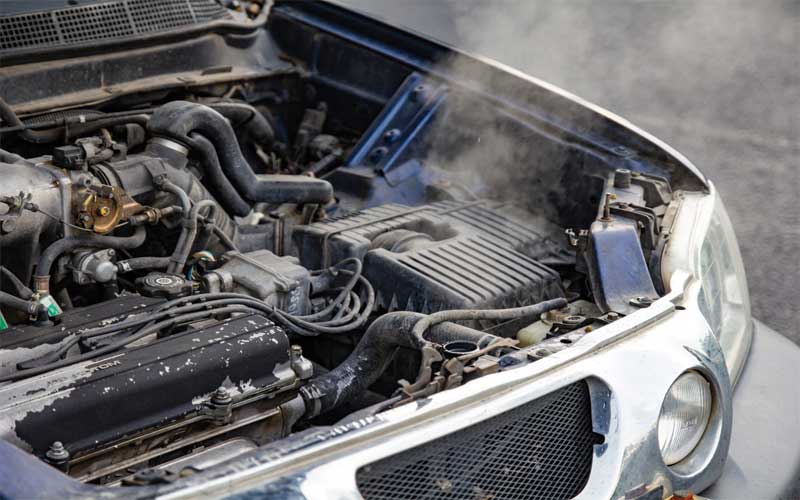
Every engine in every car has a few pistons which keep moving up and down continuously around a kind of cylinder; these pistons have a ring of medals around it that help form a tight seal against the cylinder.
So when the ring is damaged or broken, the oil below the pistol will come up; when this happens, air and gas get burnt, resulting in blue smoke.
How to Fix It
You need to step up your responsibility game; irregular or careless attention towards your car can cost you a lot more than you expect.
A clogged cylinder can cause blue heat, and a cylinder gets clogged when it has been cleaned in ages. Also, while you are cleaning the cylinder, don’t forget to clean the black drain holes carefully; clean your engine after every 4-5 days.
To know more read the following guide if you want to wrap your exhaust pipes.
5. Blown Turbo
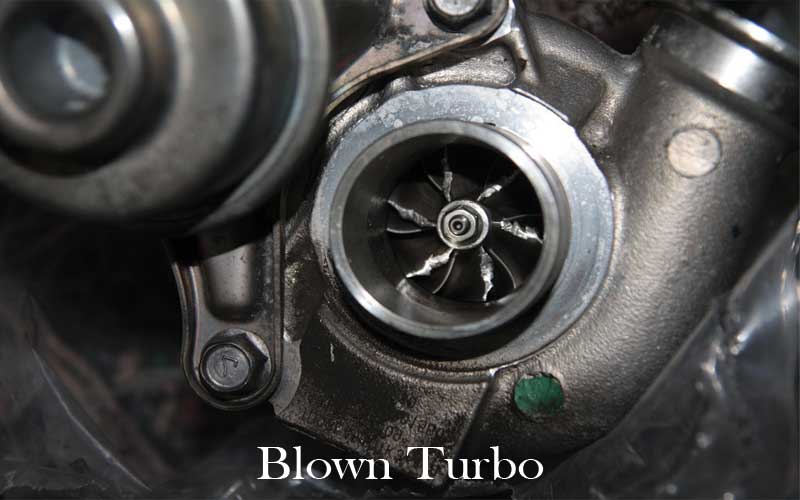
Another powerful reason for blue smoke could be your car’s turbo if you have one. Since if the turbo is damaged or there is a broken seal in the turbo, it will let the oil leak into the engine, causing blue smoke.
How to Fix It
Before you decide to ignore this one, beware that it is highly advised that you should not drive around the blown turbo of your car. Not only is it a threat to your safety but to others as well, because if your turbo blew into smaller pieces, these bits could fall into the engine causing bigger problems. Firstly you need to see what kind of damage your turbo is going through if it is broken or not.
If your turbo is not blown, just damaged, then you can easily get it replaced or maybe even rebuild it yourself, but if you turbo has blown into smaller pieces, you need a professional to help you and take care of your turbo nicely.
6. Lack of Maintenance
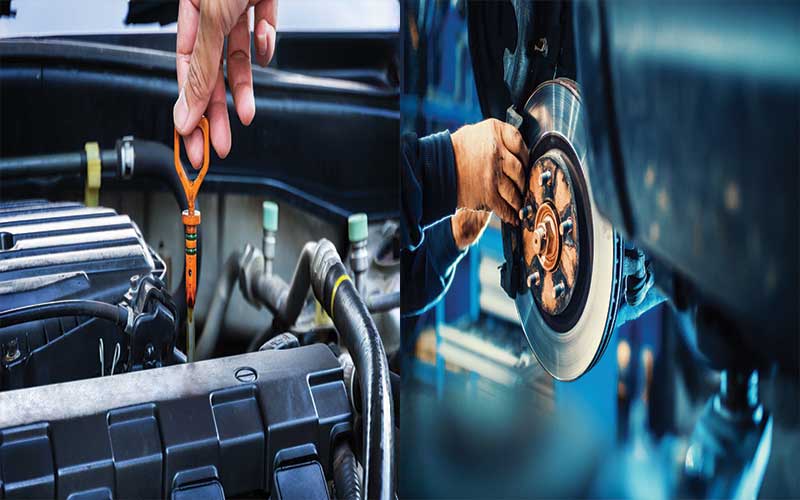
Like every other tool that we use in our daily life, the car’s too sometimes get worn out or become a little bit problematic with passing the time.
It is a known fact that nothing lasts forever, but that does not mean that you should leave things as they are; if you actually genuinely take care of your things, they last longer than usual.
A major cause of your car going through a bunch of issues and blue smoke is the lack of maintenance, care, and time you give it. Car’s because run a lot also needs proper maintenance and care.
Note: Read the latest guide of Exhaust Clamp.
How to Fix It
You should check your hood, engine, valves, and the whole car in general after every other day to ensure there’s nothing wrong with it. It won’t only help you understand your car better, but you will also right away sense when something is wrong with your car, which will help you solve issues like blue smoke on time.


Thanks for taking the time to explain